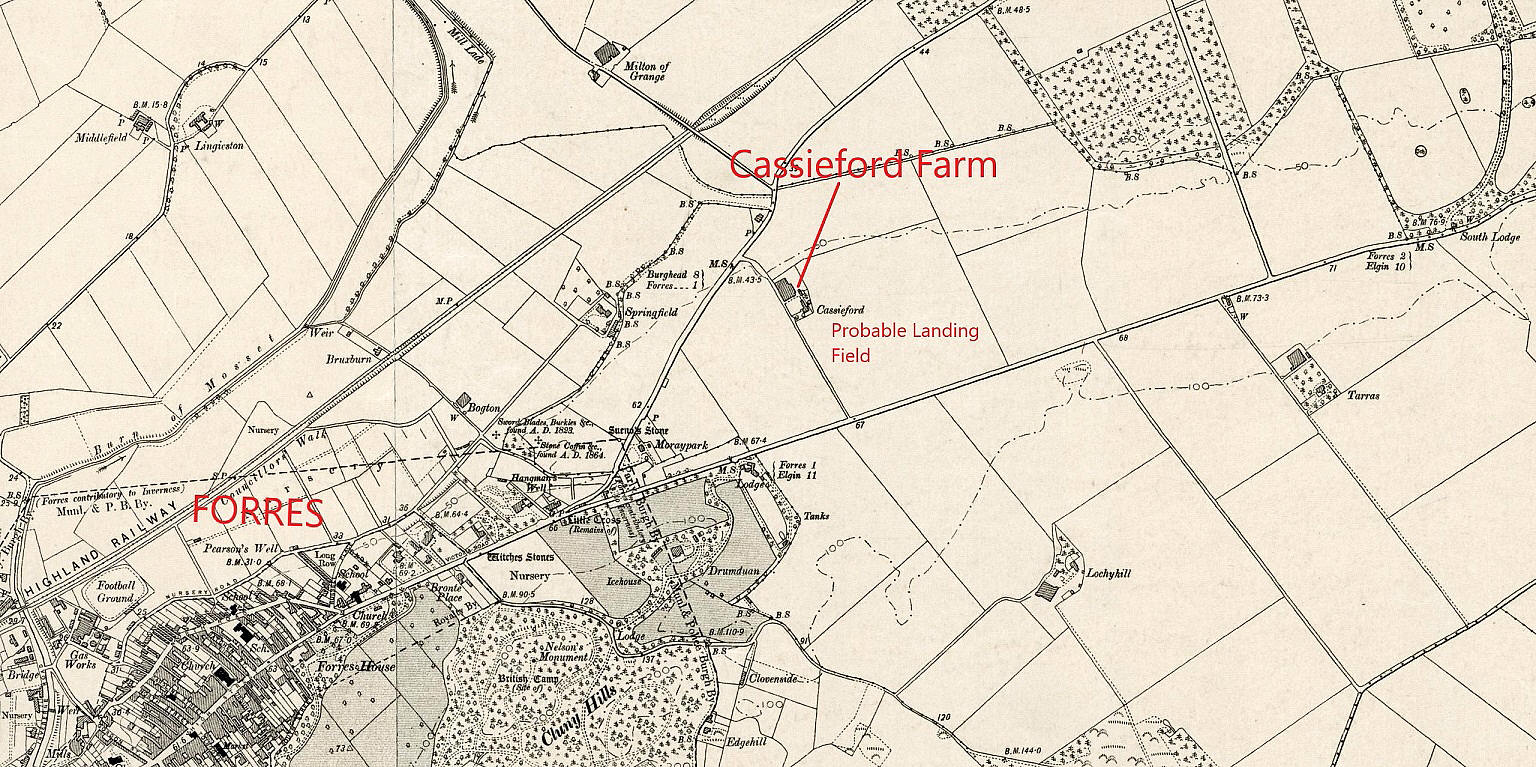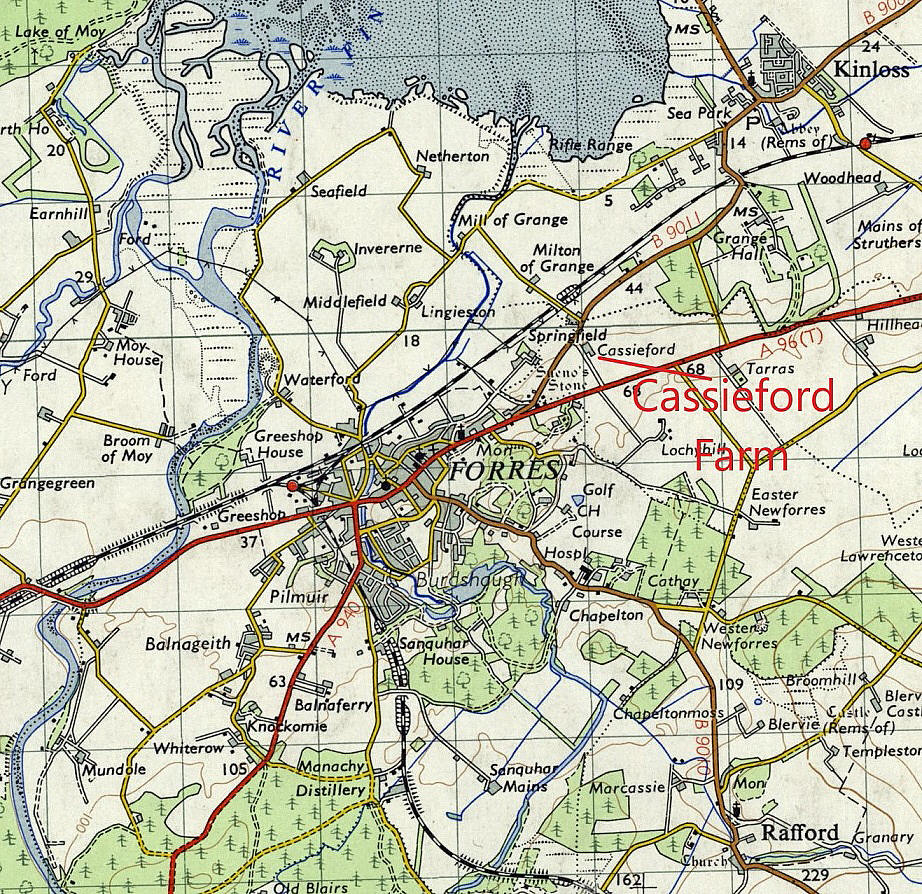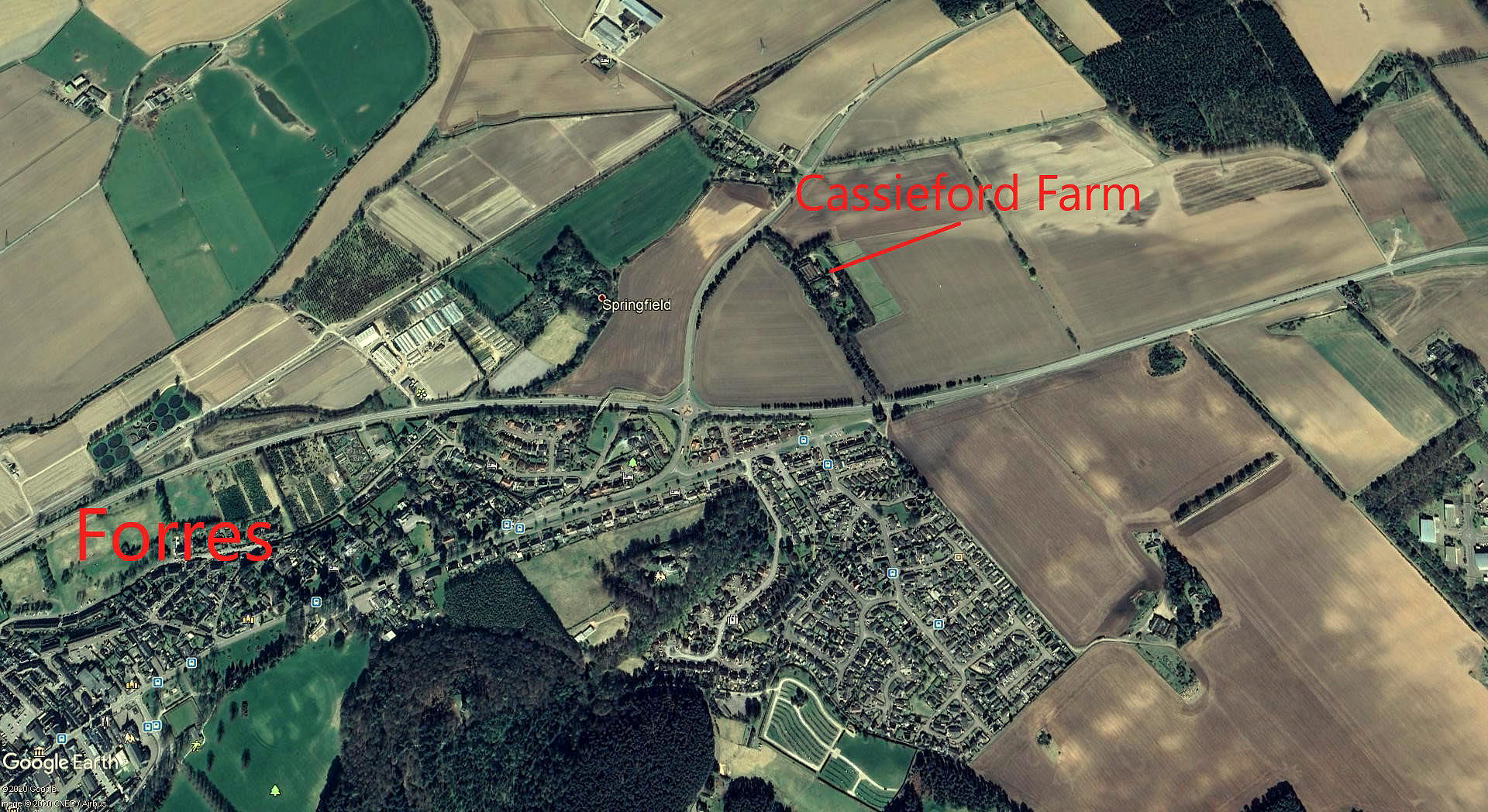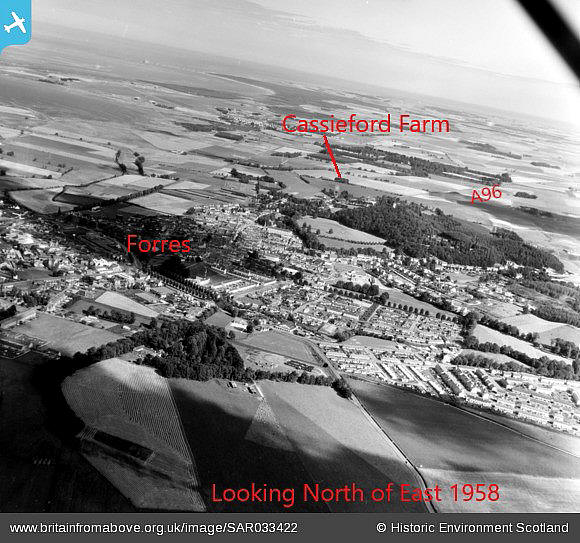Cassieford
CASSIEFORD: Temporary unlicensed aerodrome
Notes: These two maps and the pictures were kindly provided by Mr Michael T Holder.
Operated by: North British Aviation (?)
Location: Just NE of Forres town centre, 40nm ENE of Inverness
Period of operation: During September 1930
NOTES: I can take no credit for finding this location. It was all credit to Mike Holder who is a great friend and supporter of this 'Guide'.
He found a mention in the Aberdeen Press and Journal, published on the 2nd October 1930:
"A fine of £2 was imposed at Elgin Sheriff Court yesterday on Ernest Edmund Fresson, aeroplane pilot, Grove End House, Northwood, Middlesex, for using a grass field on the farm of Cassieford, Forres, as a place of landing and departure, which was not licensed by the Secretary of State, contrary to the Air Navigation (Amendment) Order."
So, what are we, some ninety years later, to make of this? It takes a bit of research, mostly already done, to come up with an explanation - of sorts anyway.
At that period Fresson was a director of the North British Aviation Co. Ltd based at HOOTON PARK AERODROME in CHESHIRE, just west across the River Mersey from Liverpool. Operating from March 1929 to 1934 with four Avro 504Ks, G-EAJP, G-EBGZ, G-EBIS and G-EBXA. Several other sites in Scotland used by the company have been listed in this 'Guide' and Capt. E. E. Fresson is usually mentioned.
Indeed, it is clearly obvious that he saw northern Scotland and the Orkney and Shetland Isles as being a major opportunity for air services, and sold out in late 1932 to form Highland Airways based in Inverness.
However, back to the story. In the 1920s and 1930s any flying site involving the public for displays and passenger flights, even if used for just one day, had to be licensed. The British of course pretty much invented, for the Empire, the concept of an administration governing pretty much everything that could possibly be administered using pieces of paper placed in huge piles of files, in huge buildings.
It is probably not generally appreciated today, (nor then it appears?), that the issuing of a license meant an inspection of the venue or flying site. Typically two men would drive up to survey and inspect the site. Normally it appears, they would drive at speed across the field to see if it was smooth enough and determine the likely landing and take-off runs for the type(s) of aircraft to be employed. Often it seems recommendations and limitations could well be imposed. Surely there was a fee to be paid for the service, but I haven't been able to determine what this was. Presumably on a sliding scale dependant on the distance involved, etc?
So, in this case, was it an oversight, or did Fresson and his co-directors assume that way up north, on the fringes of the known world, (no comments please!), determine that they could get away without having a license? Either way, it clearly failed in this instance. Also, it may seem a paltry sum today, it seems probable that £2 was roughly equivalent to at least two weeks wages for an average working man.
We'd love to hear from you, so please scroll down to leave a comment!
Leave a comment ...
Copyright (c) UK Airfield Guide



















